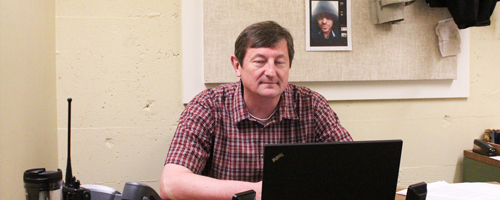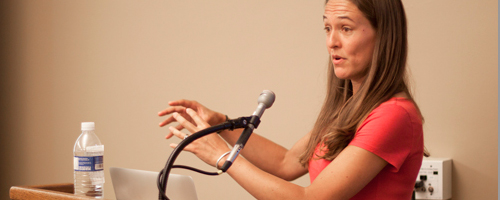In recent months, media coverage of sexual assault toward women at Portland State has been on the rise. From incidents of inappropriate sexual touching earlier this year to two recent cases of physical harassment and assault in campus elevators, many wonder whether violence toward women on campus is increasing.
CPSO talks security as reports of violence against women spike
[portfolio_slideshow id=54643]
In recent months, media coverage of sexual assault toward women at Portland State has been on the rise. From incidents of inappropriate sexual touching earlier this year to two recent cases of physical harassment and assault in campus elevators, many wonder whether violence toward women on campus is increasing.
Throughout 2012 to early July of this year, the PSU Campus Public Safety Office issued seven timely warnings related to incidents of violence or sexual harassment toward women.
This seemed to mirror the previous year’s number; in 2011, eight incidents of forcible sex offenses on campus occurred, up from four in 2010 and two in 2009. All of the attackers were nonstudents unaffiliated with the university; all of the victims were women.
The vast majority of assaults from 2009–11 took place in residence halls. All of these cases occurred between people who knew each other and did not relate to issues of building access.
CPSO said that a rise in reported offenses does not necessarily reflect an increase in actual cases.
“We know that sex crimes are grossly underreported [by victims],” CPSO Chief Phil Zerzan said. A 2006–10 Justice Department survey found that 54 percent of sexual assault cases go unreported.
According to a 2012 Centers for Disease Control report, 19 percent of undergraduate women in the United States have experienced attempted or completed sexual assault since entering college. Women aged 20–24 experience the highest rates of rape and sexual assault, according to the report.
“We aggressively investigate these [cases],” Zerzan said. “I want persons who commit these crimes to go to jail, and thus far we’ve been successful.” In the five sexual assault and abuse cases that gained recent media attention, four arrests have been made. No arrest has been made for a sexual assault that was reported in November 2012.
While most cases of sexual assault involve people who know one another, recent incidents at PSU have involved offenders who have had no relationships with the women they assaulted.
“To me that’s alarming. Stranger-to-stranger crime is unusual in the United States,” Zerzan said. A 2005 Justice Department report found that 73 percent of sexual assaults were perpetrated by a “non-stranger”—someone the victim was acquainted with.
The university’s urban setting, which blends fluidly with the city’s Park Blocks, public transit and other parts of downtown, has raised questions about ease of accessibility for a would-be sexual attacker.
CPSO recently announced new restrictions on campus building hours and a move toward electronic access.
“We’re balancing convenience with safety and security,” Zerzan said. “We don’t want to lock our campus up, but do want to control access.”
That said, to say that PSU’s campus lends itself to criminal activity wouldn’t be entirely accurate.
A comparison of crime rates at PSU against rates across the city would be difficult and statistically unfair, according to Officer Mike Bledsoe of the Portland Police Bureau. The university’s dense student population sets it apart from any other space in the city.
“It would be hard to exactly replicate the square-block foot pad that PSU encompasses and find a similar foot pad elsewhere in the city,” Bledsoe said.
Still, being situated in the midst of Portland’s Central Precinct means the university attracts crime similar to what downtown Portland as a whole experiences, Bledsoe explained. PPB often partners with CPSO in investigating and dealing with crimes on campus, including sexual assault.
Earlier this year, CPSO reached out to PPB to hire veteran detective Matt Horton, who primarily investigates crimes of sexual and interpersonal violence at PSU. Horton was trained specifically to deal with sexual assaults on campus.
Zerzan said that comparing PSU’s crime rates to those of other universities, even other members of the “Urban 21,” would be faulty. The Urban 21 is a group of four-year colleges located in urban settings that share similar demographics and characteristics.
Another large, public, urban university in the Northwest, the University of Washington in Seattle, reported two cases of forcible sexual assault on campus and 11 off-campus cases in 2011. UW is not part of the Urban 21.
“You have to compare a lot of things, including surrounding neighborhoods. Each institution is unique,” Zerzan said.
At PSU, President Wim Wiewel’s recently organized task force on public safety is looking to develop a holistic, “reasonable model” of law enforcement service, Zerzan said.
The task force is examining, among other things, the concept of a fully sworn campus police department.
When a woman was attacked by a registered sex offender in a campus elevator in early June, CPSO did not have the authority to write a search warrant for his residence, complicating his arrest.
“We should be able to control that,” Zerzan said. “We should be able to look out for the welfare of our students who are in crisis.”
The task force is expected to have specific recommendations prepared by November.
This story is the first in a series exploring violence against women at PSU. It will continue next week.






